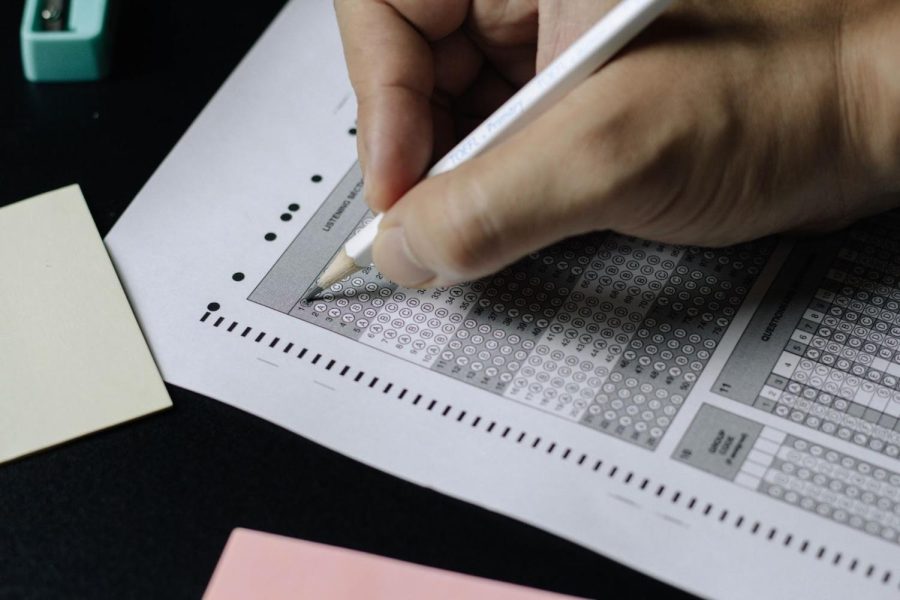The cost behind a grade: Standardized testing exclusions
Covid’s test optional policies have led many to ask if standardized testing is necessary at all.
March 16, 2023
Students all over the country have continuously been pushed to generate high ACT and SAT scores, which organizations have profited off of. This has led to the exclusion of students from minority backgrounds from college applications.
Standardized testing has become a major worry for students. As ACT and SAT score requirements have continued to sky rocket, so have the concerns of students all over the United States. This expectation of high test scores has led to many being left out of colleges and opportunities, targeting students from low income households.
The ACT and SAT are tests where money directly impacts your success. Workbooks come out every year, reaching price points upwards of $90. Additionally, the content of these books is replaced extremely often, leading students to have to buy new ones almost annually. Tutoring has also become a necessity to pass these tests, as they require certain strategies ranging from time management to elimination practices. The resources needed to achieve a high score on these tests are no longer about academic achievement or high intelligence, but instead how much people are willing to spend to just be able to apply to colleges.
The College Board and standardized testing have promoted a system which inherently profits off of the economic background of students instead of being a way to test one’s intelligence. By requiring these tests, colleges have effectively excluded students from academic opportunities. The state of Mississippi released statistics stating that Juniors in the state averaged an ACT score of 17.7 in 2020, with only 9% of juniors meeting the benchmark. Mississippi is one of the poorest states in the country, with the average household income being $50,000. The lack of ability to afford resources is reflected in the scores of students who would be unable to attend colleges unless they apply to a test-optional institution.
Most colleges have gone test-optional since Covid-19, however, California was the first to become test optional in 2020, eventually deciding to become test-blind from 2022 until 2024. Being test-optional has led to more people being able to go to college and achieve higher education, which was limited due to the previous standardized testing requirements. Test-optional colleges have increased diversity by not forcing applicants to submit scores, allowing students, especially those of less privileged backgrounds to focus solely on their academic achievements.
College degrees have become essential for the future success of students everywhere, and to require test scores is actively discriminatory against minority groups, leaving them stuck in a cycle of poverty.
The cycle of poverty is one that is constantly experienced in this country, people from low income households are left out of opportunities to get out of their situation, and suffer from the disadvantages- eventually being left out to continue the same pattern when they have children. Going to a good college should be an ability every student can possess regardless of their economic background, and it would benefit countless underprivileged populations all over the country.
The United States is at a turning point in education, one in which every student at both Green Hope and other high schools hopes to see all testing become optional in order to bring back focus into academic achievement instead of financial abilities.











































































